Juki Baby lock in green
Presumably one of the earliest domestic serger overlocker machines.
Juki factory. Made in Japan. Circa 1971.
Mostly metal.
Four thread machine, with a unique stitch unlike later overlockers. Chain stitch to the left and overlock to the right, two separate stitches.
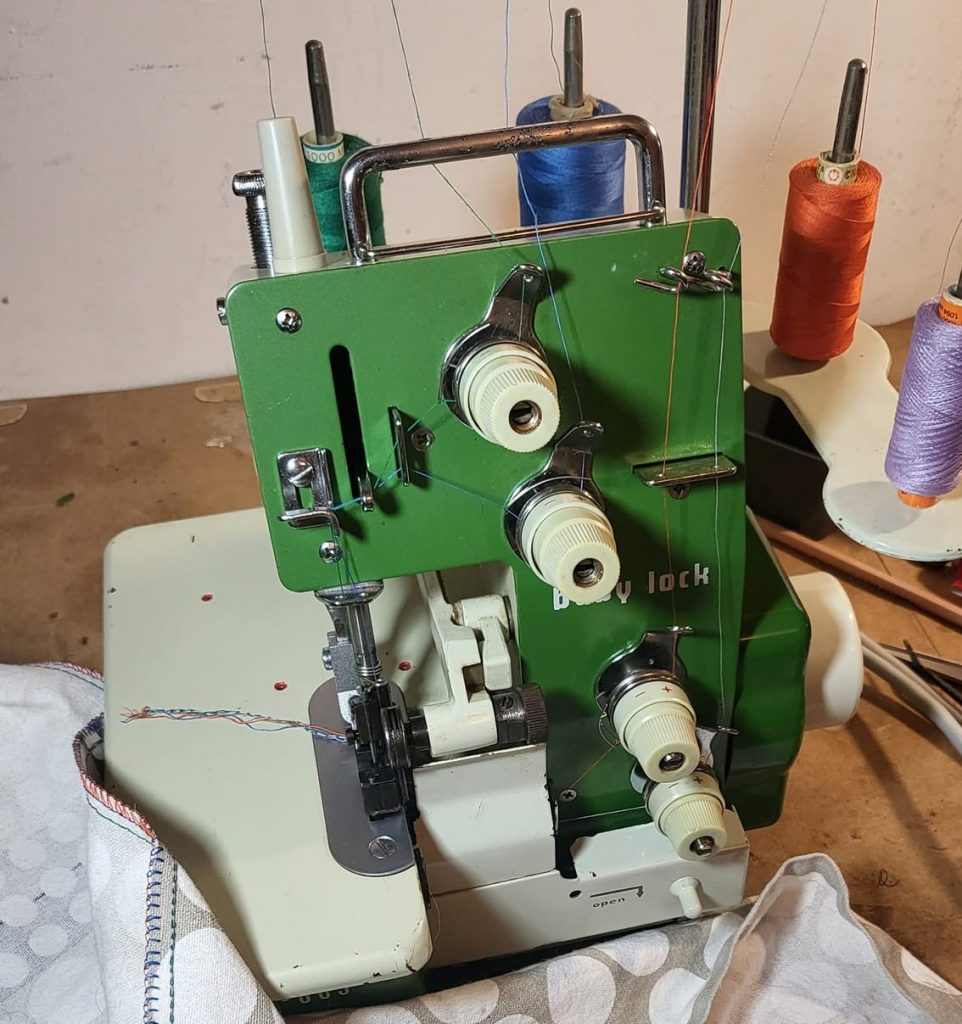
According to a few websites, including the History of Baby Lock, chronology by year and model a Russian website. This machine was released in 1971.
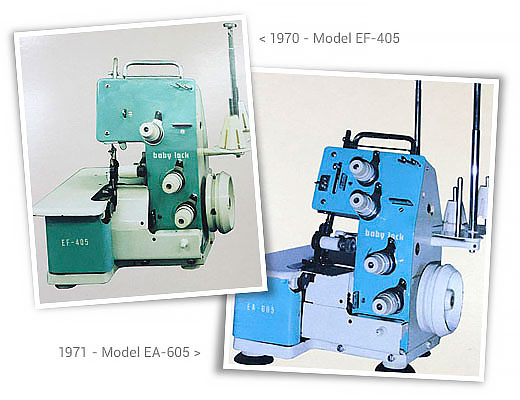
This machine was given to me by a fellow VSM enthusiast. I was actually given two in identical dusty shape. The other I sent to a friend, he got it up and running. That inspired me to give this one a chance and I am glad I did.
It will never be pristine, but considering that it sews is a miracle in itself. Or is it just that these machines were built to last.
This machine had been stored in a dusty farm shed for many years. It has all-metal interior and mechanism, build on a solid cast iron chassis. The side access tray is metal (and now a bit rusted), it has an all-metal removable face plate, metal presser foot lever, solid metal handle which doubles as a thread guide. It is a heavy machine; the metal handle makes moving it very easy. The plastic external parts include the hand wheel, dive belt cover and parts of the tension knobs.
A few months after I was given this machine, I saw an ad for a free instruction manual. When I collected the manual I was excited to see if was for this machine. Not only that but inside it had another manual for this machine. A parts list. You can download both these books for free from my google drive.
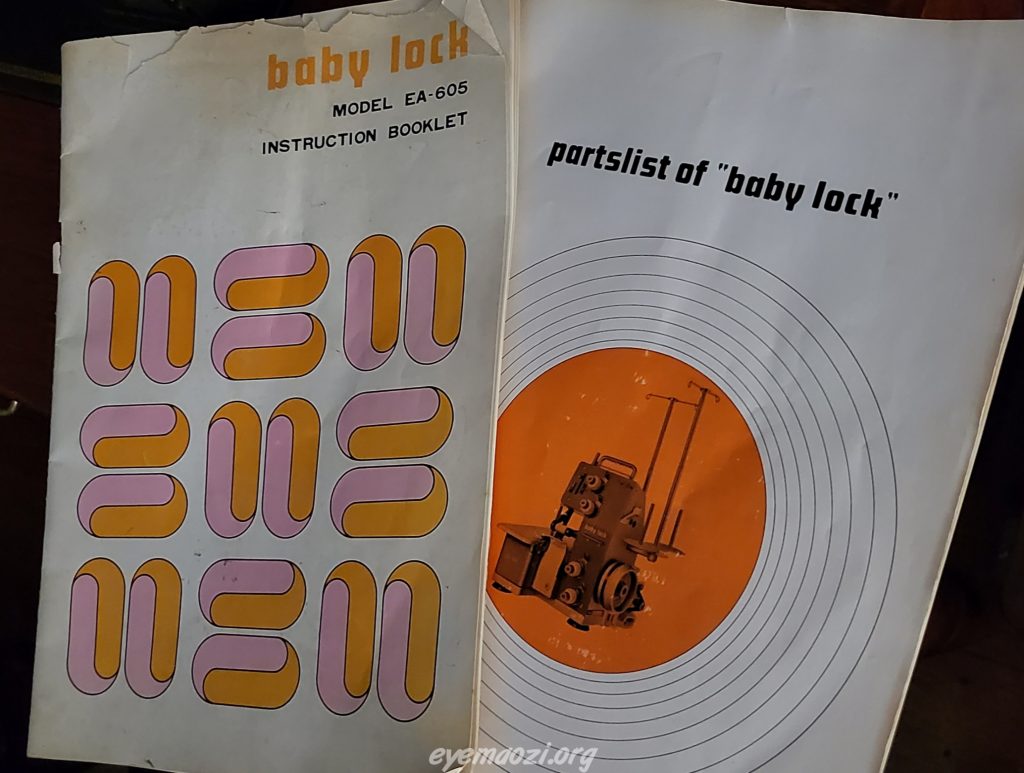
The instruction book can be found here. The partslist booklet can be found here.
Another version of the instruction book can be found on my google drive for FREE , here. I do not own the hard copy of this one, it was found for free in a FB group.
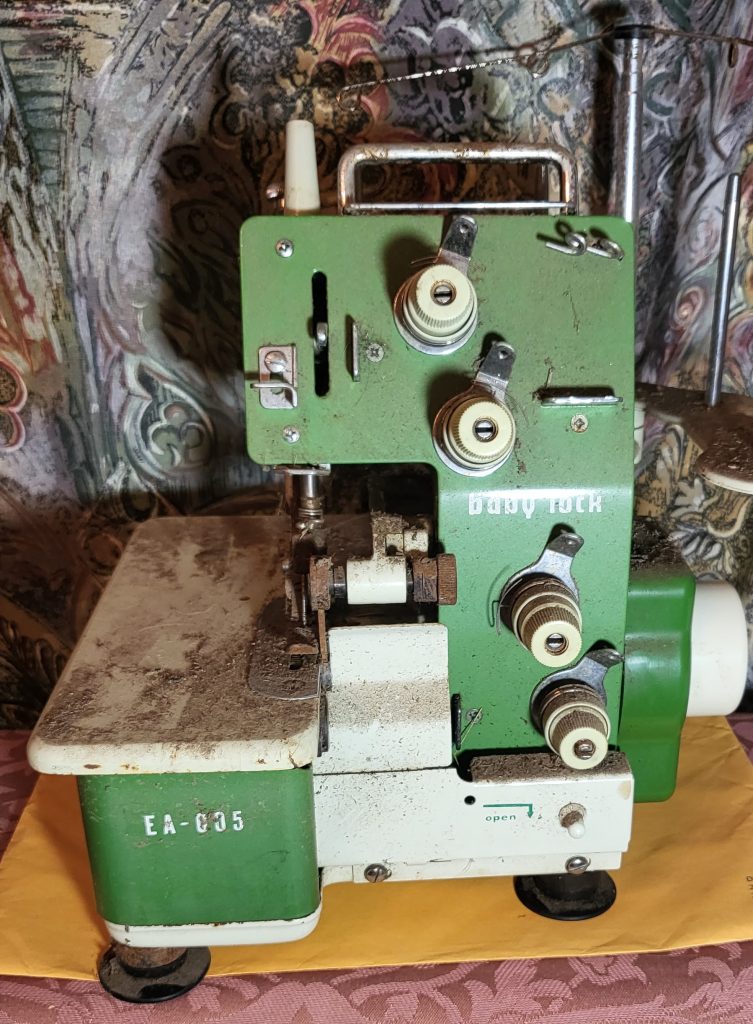








A bit of oiled sandpaper and most of the surface rust came free. Not a pristine machine by any stretch of the imagination, but a true survivor.
















1975
The unique stitch that this machine does, is shown here in this advertisment.
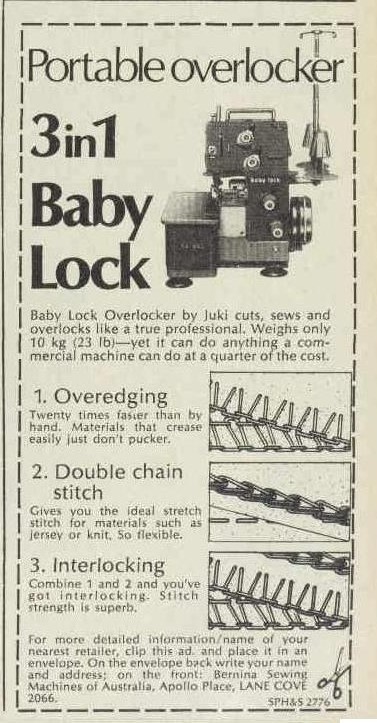
I have this machine and need the manual
Please be in touch
Hi Janet, I hope you located the instruction manual link higher up on this page. The manual is available for free from my google drive, amongst many other manuals. Just follow the link. Cheers Patricia
Thank you so much for great pictures and the story of EA-605 Baby Lock ! I have been looking for the manuals and with your kind help I have them now. I bought my well preserved machine from a flea market for a symbolic price years ago. Now I started to look information and here I see your pages!
Thank you for posting the pictures of a correct stitch. My machine stitches very steady and reliable but I had difficulties to understand the drawings of the correct stitch, your photos reveal how overedging threads intervene…interlock on the edge, that the scissor has just cut. Really happy about seeing that clearly.
It had a typical problem with one of the thread tensioner that had came loose. I read this is somewhat a common problem. See, the tensioner is fixed to the green front panel with a nut inside. Fixing the nut back tight with the tensioner body taking care the little thread spring is in correct position and off you go again! I was surprised to find missing pedal and power cord for my machine. I had an old EVA sewing machine and it had an universal pedal with identical power plug to the Baby Lock. later on, I have seen these pedals+power cords in the webpages of sewing machine parts shop, so even the machine will be soon 50 years old, it is usable and you may find parts and help to it.
so glad I could help, these are wonderful overlockers. I am sure you will treasure yours, now you have it working properly again. Plus they are so easy to service yourself, it should last a few lifetimes with some care.
Heikki merhaba.
Makınayı yenı aldım fakat ıplerın nasıl takılacagı konusunda destege ıhtıyacım var. Yardımcı olabılırmısınız.
(Hello Heikki.
I just bought the machine, but I need support on how to install the ropes. Can you help?)
All I can suggest is that you follow the diagram in the instruction book. You can find it for free download on this page. I would also suggest you thread the machine in the correct order. The loopers first then the needles. So going left to right being 1,2,3,4 then you need to thread in order 3,4,2,1. Good luck.
(Önerebileceğim tek şey, talimat kitabındaki şemayı takip etmenizdir. Bu sayfada ücretsiz olarak indirebilirsiniz. Ayrıca makineyi doğru sırayla geçirmenizi öneririm. Önce lüperler, sonra iğneler. Yani soldan sağa 1,2,3,4 olmak üzere 3,4,2,1 sırayla iplik geçirmeniz gerekir. İyi şanslar.)
Hello, I accquired this machine and now going over it and there is a part that has broken, is the spool stand and part 205008K is borokcent and not sure if I need part 205163-S. Any assistants would be a great help.
Sorry the part number is 205-0103-01 B not the one above.
Mine came with only one of the two dual spool holders that fits in the side of the machine. I couldn’t find a second to slide into the hole in the back of the machine anywhere. My solution was to make an adapter from aluminum plate that screwed onto the side arm, but wrapped around the back to hold two more spools. I might try and kluge a second support to fit into the unused rear hole, but for now it’s just cantilevered. I bought a cheap aftermarket stand and took the vertical pole / thread guides off it to screw into the back side of the adapter for the two rear spools. It works.
Hi,
I finally started using a mid 1980s Juki MO-103N a neighbor gave me about 10 years ago & love it. But decided to get something that could do a chain stitch too–after at lot of videos, and a mechanic commenting “if they say it’s old, that’s good. If they say it’s really old, that’s even better” I decided to stay with vintage. And fell in love with the look of the Baby Lock EA-605.
And few days of checking listings on auction sites, I was so happy on finding one that is literally “new old stock”–most accessories still in their bags, and even came in its original SN matched cardboard box!! The manual doesn’t have a copyright year in it, but it’s different than yours–it is “landscape” format (4 languages on each page) and black artwork. (I’ve seen pictures of green ones). She’ll be well oiled before I start putting her to work…
FYI, for those looking for manuals, if you want a hard copy, there are some that show up on auction sites (eBay) now & then…
(FYI, I have an industrial sewing machine for my leather work, and added a new Juki Haruka last fall for some work, but mostly garments, and once again have my Mom’s 1957 Necchi Super Nova–the machine I started on, but in 1989 I bought a Baby Lock sewing machine, which went to my sister when about 20 years ago I got a Bernina Aurora 450, and have since added a Singer “Red Eye” in a parlor cabinet (I do try to figure out the treadle now & then), a circa 1950 Singer 15-91… Apart from the Red Eye, I do use them all–though my sewing garments is sporadic… Fortunately the vintage machines I have have been easy to clean up and replace a belt and get running nicely again).
Susan, thanks for sharing your wonderful story and insights into the older machines. Cheers Patricia